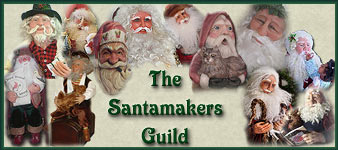Let's start off with the design of my next lovespoon. The first picture shows a scan of a pencil sketch I did in my notebook. I started with a central idea: a loving couple with hearth and home. That became the overlapping hearts in a house-like structure. I thought next I would have a symbol of protection: the Celtic dragon below the house. You will note that the firey breath and the end of the tail are also hearts. Now for a symbol for luck. Why not a four-leaf clover. Better yet, the leaves look like hearts. Then the bowl of the spoon: another heart. Getting the drift here? You'll notice if you look closely I first thought of a pair of diamonds just above the bowl. Diamonds represent prosperity for the loving couple. But I didn't like the transition to the bowl, so I tried the clover.
Unfortunately, I didn't like the way the clover and the heart-shaped bowl looked together either. There wasn't any way I could see the clover flowing naturally and smoothly into the bowl. So I refined the clover design a bit and had the stem flow into an oval bowl. I think that looks much better.
But I needed another element on top. I try to make most of my lovespoons about 11" to 12" long and maximum 3" wide. That proportion appeals to my eye. Your mileage may vary. Based on those measurements I find that each element should be about 2-1/2" tall. So I needed to add something to the top. I found a Celtic eagle that I liked. It could symbolize both protection and the national symbol of the United States.
Now I got to thinking that having the dragon and the eagle was a little too much emphasis on protection, so I had to go looking for something else. I found a rounded Celtic design of kissing cranes and decided to go with that, symbolizing togetherness for life. The second picture is of the finished design drafted out and ready to transfer to the wood blank. The shaded areas will be pierced through, and the heart-leaves of the clover will be carved with a central vein and relieved edges so that they look like clover leaves. The tail of the eagle will go behind the peak of the house's roof.
I've learned that the symbology can be somewhat flexible as I hope I have illustrated here. Other elements you can add would be things that illustrate a common interest in the happy couple. If they love to sail, you might have a boat somewhere in the design. In general, though, other common symbols are lock-and-key for security, anchor for stability, bells for marriage, entwined vines or Celtic knots for growing together, endless Celtic knot for endless love, horseshoes for good luck, balls in cage for children or captured love, cross for sanctity in marriage, and so on.
So that was my thought process in putting together this design. David's book has an excellent chapter on design that taught me a lot. Maybe not enough, but I like this design and can adjust it as I carve, making elements bigger, smaller, fatter, thinner if I think it improves the overall look. The idea is to have a balanced design such that the eye flows naturally to the central idea and that the design flows from one element to another without jarring changes. I think I've accomplished that here, but let me know what you think.
Until next time, let the chips fly!























